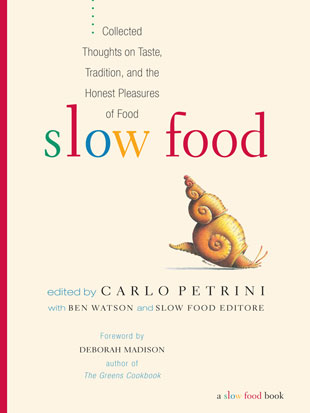In these fast-paced times, many people have lost touch with the pleasures that come from a relaxed, focused, and leisurely experience of preparing and eating a meal. Carlo Petrini started the Slow Food movement in Italy, and it spawned an international quarterly journal dedicated to culinary delights and natural processes for the production of the food we eat. This book contains an eclectic and wide-ranging collection of more than 100 articles about street food, beer, markets, poultry, cheese, wines and vines, animals, meats, and much more. The authors include journalists, food writers, and opinion leaders from around the world. Check out the Slow Food International Manifesto which was endorsed and approved in 1989 by delegates from 20 countries.
As Deborah Madison (The Greens Cookbook) points out in the foreword, Slow Food sees the kitchen and the table as centers of pleasure, culture, and community. It favors farmers’ markets filled with food that has vitality, flavor, and beauty versus food shipped into stores from distant marketplaces that is often out of season and highly toxic thanks to packaging and things used to increase shelf life.
Slow Food is the antidote to fast food, which according to Hermann Scheer, subscribes to the principles adopted by the Olympic Games: quicker, higher, further. This movement has quite a challenge before it, given the rapid McDonaldization of the world! We enjoyed the articles on tacos, gyros, tandori, pickles, and God in the crumbs (see the excerpt). The only downside to this phenomenon, as George Ritzer reveals in his article, is that Slow Food might become an elite movement that attracts mainly members of the upper class.
